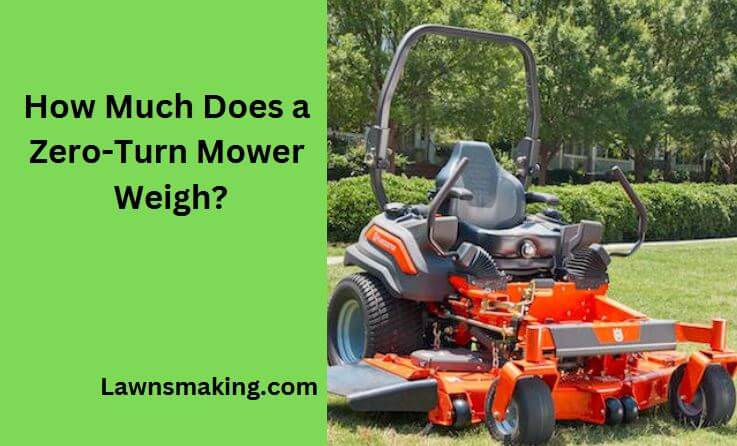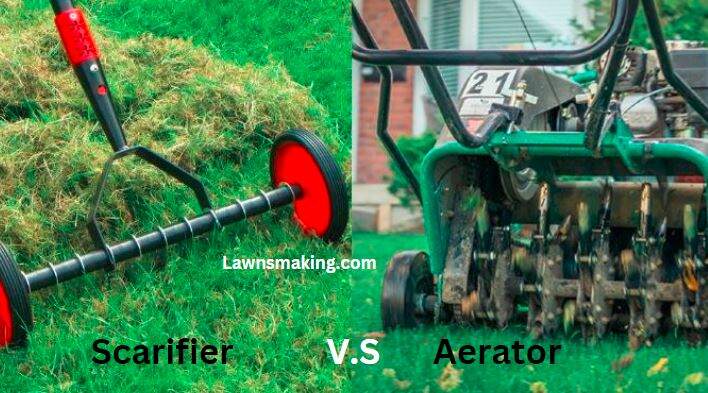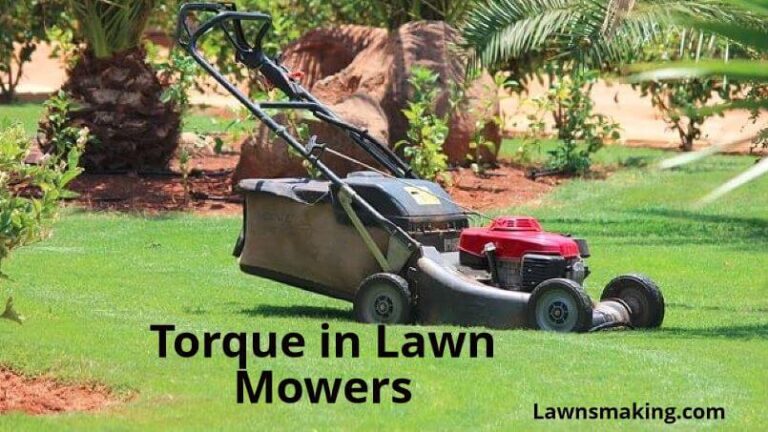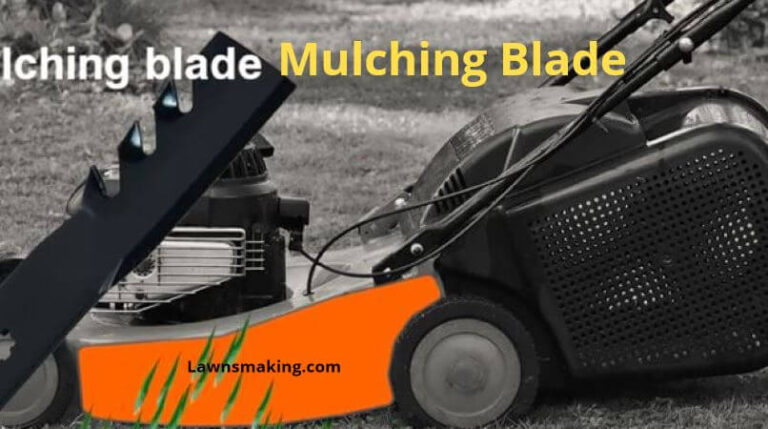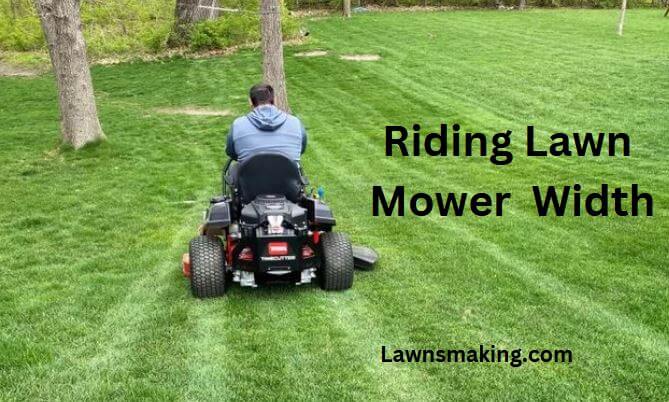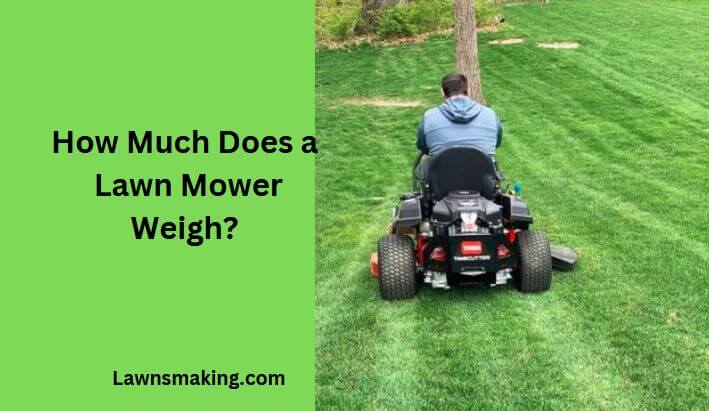
The weight of a lawn mower is one of the crucial factors that may inform whether you buy a given mower or not. It’s essential to know your lawn mower’s weight for reasons we’ll discuss later as we address the question: how much does a lawn mower weigh?
On average, small push mowers weigh between 15 and 30 lbs (6.8 and 13.61 kg). Medium lawn mowers, including self-propelled, gas-powered, and electric mowers, can have a weight ranging between 30 and 100 lbs (13.61 and 45.36 kg). Riding lawn mowers are the heaviest residential mowers with a weight range of over 300-1500 lbs (136.08-680.38 kg).
In the rest of this article, I provide a comprehensive guide to the lawn mower weights of different lawnmowers. You’ll also learn the importance of knowing these weights. Keep reading!
Why Does the Weight of a Lawn Mower Matter? 8 Reasons
Let’s delve into the reasons why the weight of your lawn mower matters to you. As a matter of fact, every single landscaper wants to know how heavy their mowers will be because you want the machine to suit your specific needs and context.
Here are the reasons why the weight of a lawn mower matters:
Weight Affects Maneuverability
Generally, the easier a lawn mower is to maneuver, the better and the more comfortable it becomes. Lighter models are straightforward to navigate around obstacles, tighter corners, and uneven terrain.
However, heavier machines are difficult to navigate and change direction when necessary. This means less efficiency. Even so, heavier machines offer greater power and more precise results than lighter models, thanks to their advanced features.
Maneuverability is essential for push mowers that require physical effort to move.
Find Out: How Much Torque Does a Lawn Mower Have?
Weight Determines Ease of Transportation

Transporting a lighter lawn mower is easier and more convenient than larger, heavier models, especially if you intend to transport it more frequently. Additionally, it’s pretty easy to lift lightweight mowers onto and off the vehicles.
Heavy-duty riding mowers with over 400 pounds need extra effort to transport them. For example, you may need help loading a zero-turn mower onto a truck before transportation.
It Determines Storage
Buying a lawn mower that will be easy to store is essential. Remember, weight is directly related to a model’s size and dimensions.
For example, a smaller, more compact mower takes up less space. Also, fitting such equipment in your garage or storage area will be much easier. Similarly, maneuvering with a small mower in the garage is a cinch.
You need ample storage space to accommodate heavier and bulkier models. Cluttered or tight spaces won’t work for this mower size, though.
Also Read: How Much Does a Zero Turn Mower Weigh?
It Determines User Comfort
When choosing a lawn mower for your home, user comfort should be a key factor. You should understand that heavier models can lead to serious physical exertion. This often stresses the operator.
Lighter mowers with a good posture enhance user comfort. Heavy mowers increase the discomfort of individuals, especially those who are physically disadvantaged and less fit.
Remember, a lawn mower should be easy to operate, and light models have that advantage.
Weight Determines Fuel Efficiency
As a general rule, lighter mowers consume less fuel thanks to their small engines. Bigger machines that produce plenty of power and higher torque must use much fuel. This results in cost savings over time.
That said, note that smaller machines need less fuel to move. Also, these machines may not be ideal for large lawns with dense grass cover.
Performance on Uneven Terrain
Heavy lawnmowers are the best option if looking at stability on the ground, especially on uneven terrain. They provide better traction due to their heavy-weight nature, leading to greater stability and better mowing results.
Lightweight mowers usually trip on uneven surfaces. In the process, they don’t navigate the entire terrain well, leading to a poorly-cut lawn.
Generally, heavier lawnmowers perform well on uneven terrains because of the high traction provided. They cannot slip and can, therefore, move forward, turn, and operate safely in such conditions.
Type of Lawn You Want to Mow
In general, if you have a regularly-maintained lawn, light lawnmowers will be sufficient. For instance, a push mower will be okay for small yards. Medium lawns need slightly heavier machines like self-propelled lawnmowers.
Lawns with irregular shapes with many twists and turns need a highly maneuverable mower, such as a zero-turn mower. This mower is heavy but also boasts a highly responsive steering wheel.
Weight Determines the Lifespan of a Mower
Without a doubt, some homeowners need heavier mowers because of their durability records. Generally, heavier lawnmowers are constructed with more robust materials that could last ages. The sturdier frames and components used usually resist elements of damage.
As you may know, mower vibrations can lead to stress in its structural integrity. Primarily, lighter mowers stand a higher risk of losing their integrity faster than heavier models.
14 Types of Lawn Mowers and Their Weights
Generally, the lawn mower weight can vary significantly from one type to another thanks to the brand and specific model.
1. Push/Reel Lawn Mower
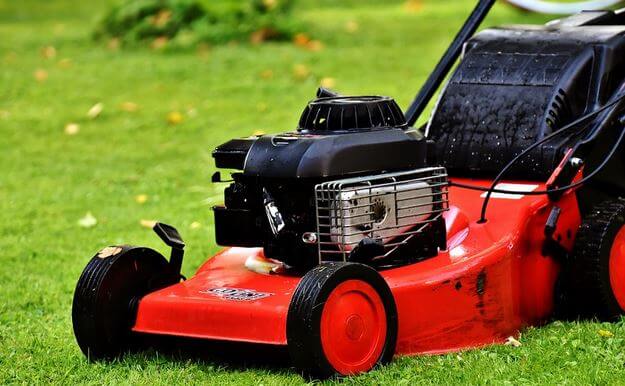
Push lawnmowers usually require manual effort to move them forward. Pushing forward triggers blade motion as they move on the grass.
Usually, push mowers are lightweight and eco-friendly if you want to have a ‘green’ mower. Plus, these are the best options for small, flat lawns.
The push reel mowers have a weight range of 15-30 pounds.
2. Gasoline-Powered Push Mower
Gasoline-powered push mowers have a gasoline engine that uses petrol or diesel. You can use a walk-behind lawn mower for residential lawn maintenance.
With a weight range of approximately 50-80 pounds, you have a slightly heavy machine that can work your medium to moderately larger lawns.
Therefore, gasoline-powered lawnmowers are versatile and can handle various tasks in different conditions.
3. Rotary Lawn Mower
Rotary lawnmowers work by using a horizontally spinning blade to cut the grass. These are common equipment for cutting grass in both residential and commercial settings.
That said, the average weight of a rotary lawn mower falls between 30-90 pounds for small and medium rotary push mowers. As the cutting deck increases in size, the weight also increases.
With that in mind, self-propelled rotary lawnmowers can weigh approximately 70-150 pounds, depending on the features included in their design.
4. Self-Propelled Lawn Mower
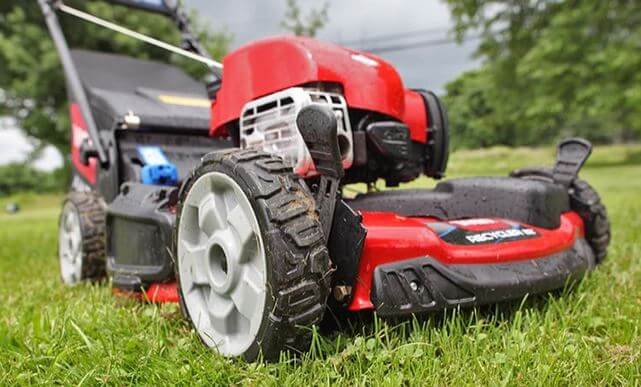
Self-propelled lawnmowers have an engine at the front or rear that moves the mower forward. Usually, the entire system is controlled by a set of buttons or a lever. The operator simply adjusts the speed at which the mower moves.
Self-propelled lawnmowers are easy to operate. The operator does not suffer from physical exertion as in the case of push mowers.
On average, this type of mowers weigh around 75-100 pounds. This means they can be heavier and bulkier, making their transportation difficult.
5. Electric Push Mower
Electric push mowers draw their power from electricity. The power source could be rechargeable batteries for cordless types or an outdoor power outlet for corded electric mowers.
Like push mowers, electric mowers are environmentally friendly thanks to their quiet operations. They are also easier to maintain.
The weight range for an electric push mower is between 30-60 pounds, depending on the size, model, and features.
6. Riding Lawn Mower
A riding lawnmower is a great choice if you have large mowing areas to work in. The mower offers the ultimate comfort for the operator, who only needs to sit and steer the machine in the target area.
This mower is designed for demanding tasks—whether you want to cut thick, tall grass or a thin, spiky bush.
That said, this mower is extremely heavy and bulky, weighing between 400-800 pounds.
7. Zero-Turn Mower
Zero-turn mowers are the preferred equipment for precision mowing on extensive lawns. Since operators can turn around quickly and cut sharp corners, they have become popular for high maneuverability.
Moreover, zero-turn mowers feature two steering levels, which enhance operations. Often, these machines are equipped with heavy, powerful engines and rear-wheel steering.
Generally, zero-turn mowers weigh between 500-900 pounds on average.
8. Lawn Tractor Mower
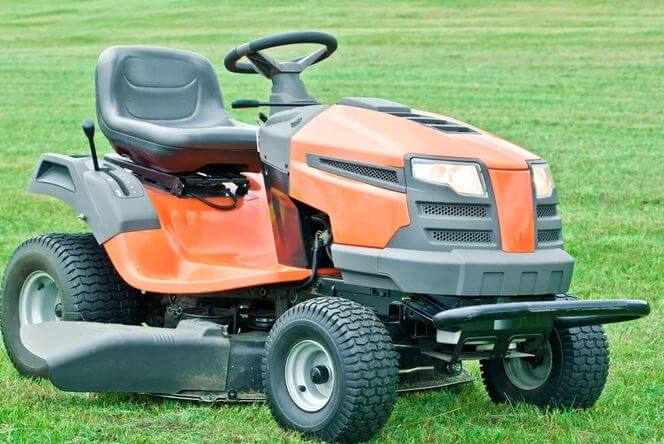
Lawn tractors are also a type of riding lawnmowers. Weighing between 400-800 pounds, these are heavy machines with great versatility thanks to the various accessories and attachments you can mount on the platform.
The lawn tractor provides comfort and convenience for the operator, all thanks to adjustable seats, cup holders, and controls that are easy to use.
You’ll use the lawn tractors on large, open areas of grass.
9. Cylinder Lawn Mower
If you are light-mowing on regularly maintained turf, cylinder mowers could be the best fit. These mowers are designed with a rotating cylinder with multiple blades that provide a clean cut of short grass.
The mower is also highly maneuverable. Maintaining cylinder mowers is relatively simple, and since they are also push machines, they are environmentally friendly.
Cylinder lawnmowers weigh between 15-50 pounds.
10. Stand-On Mower
As the name suggests, the stand-on mower is a commercial-grade lawn mower designed for professional landscapers. The equipment is used on large properties to maintain large tracts of grass.
A user stands on a small platform at the rear of the machine. This mower offers speed and efficiency – hence, they can work on large areas quickly.
On average, stand-on mowers weigh between 500-900 pounds.
11. Hover Mower
Typically, a hover mower creates an air cushion beneath it, floating a few inches on the grass. This way, the mower hovers and glides smoothly while cutting grass.
Hover mowers boast excellent maneuverability as the absence of wheels allows them to pivot effortlessly. Hence, they can navigate around obstacles and trim edges.
The weight range for this type of mower is 15-30 pounds. They are suited for small lawns and can work on uneven and sloped terrain.
12. Rear Engine Riding Mower
Rear-engine riding mowers house engines at the vehicle’s rear, just beneath the driver’s seat. The location of the engine at the rear ensures better visibility of the work area for the operator.
Typically, rear-engine riding mowers are more compact and lightweight than their front-engine counterparts. This means that they are easier to maneuver in tighter spaces.
The weight range for this category of lawn machines is between 300-600 pounds.
13. Rear Wheel Drive Mower
Rear-wheel drive mowers move forward due to the motion of the back wheels. Whether the engine is powered by gasoline or electricity, it connects to the rear wheels, propelling the machine’s forward motion.
You have a handle that’s typically used for controlling this mower. While the mower does an excellent job in wide-open spaces, tight and challenging terrain may be difficult to maneuver.
The rear-wheel drive weighs in at anything from 50-800 pounds. Of course, this depends on the size of the mower.
14. All Wheel Drive Mower
The wheels of the all-wheel drive connect to engine power. This means all wheels can move equally as a single unit.
With this design of the mower, you get speed and power. All-wheel drive mowers offer enhanced traction, vital for stability in sloppy terrains.
Generally, the all-wheel drive weighs 70-120 pounds for residential types and 150-400 pounds for commercial types.
